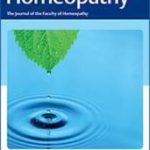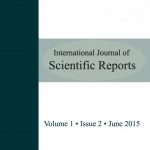Self-assembled Patterns Formed in Evaporating Droplets to Analyze Bi-component Homeopathic Preparations in the Low Dilution Range

Background - Homeopathic complex remedies, composed of several homeopathic medicines in the low potency range, are frequently used in the treatment of a number of common disorders. At the same time, they represent an almost unexplored area of research. Are complex remedies just additive mixtures of the components, or are there interactions between the latter leading to new properties of the complex? Methods - In the present study, we analyzed as an example the simple bi-component complex, Luffa 4x – Mercurius bijodatus 9x, by means of patterns from evaporated droplets and tested what influences the complex’s single compounds have upon the patterns and if there are any interactions. For this purpose, we compared in a series of five experiments patterns from evaporated droplets of the complex, Luffa 4x – Mercurius bijodatus 9x, and three comparison samples in which one or both of the complex’s compounds were replaced by potentized solute. The patterns were photographed and evaluated for their gray-level distribution and texture using the software ImageJ. The experimental set-up’s stability was tested by means of systematic control experiments. Results - We found that Mercurius bijodatus 9x significantly influenced the patterns of Luffa 4x, increasing their homogeneity; at the same time, the patterns of Mercurius bijodatus 9x combined with solvent were more heterogeneous than those obtained from a control consisting of two pure solvents. Conclusion - In this phenomenological assay, the complex Luffa 4x – Mercurius bijodatus 9x does not correspond to a simple addition of the components. The exact nature of the underlying interaction needs to be elucidated in further investigations.







Lascia un commento
Devi essere connesso per inviare un commento.